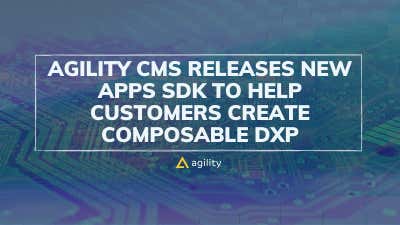Three Steps To Planning Your Content Architecture


The various components of content architecture can seem daunting, but when you break them down, it becomes clear that they are simply a series of interconnected systems.
These systems comprise the content, people (your team members and the audience), workflows, and technology (your content management system).
In this respect, building a content architecture is nothing more than devising a strategy for managing interactions between these systems to maximize the value of the contribution from each of them.
Read more on: What is Content Architecture & Impacts on Bottom Line | Agility
Compelling content isn’t just created; it has to be managed.
If there’s a primary difference between organizations that excel at content marketing and those that flounder, it’s this: the latter think that creating content is an end unto itself, while the former know that managing the content process is just as important.
Content marketing is a proven strategy for engaging audiences and improving ROI, but that doesn’t happen in a vacuum. The actual value of content only comes when a systematic process backs it up and its messaging can reliably be delivered to the intended audience.
Successful content architecture on the backend reaps frontend rewards
Ultimately, this means that you have work to do on the backend if you want your content strategy to be successful. Putting up a website and expecting your leads to find your content and gain value is insufficient.
The good news is that this effort pays dividends as you progress. By devising systems for content distribution and management on the backend, your digital persona will be more agile, you will be positioned to connect with individual customers through personalization, and you’ll be able to expand the reach of your content.
The following steps can send you on your way to a successful content architecture strategy:
Set your goals and objectives
Decide on your big-picture goals for your content strategy
What your content architecture eventually looks like will largely depend on what you hope to accomplish from your website and your content strategy in general. Therefore, starting by defining your objectives before moving on to more specific components is best. For example, if your primary goal is to increase brand awareness through thought leadership, the way you lay out and manage your content will look quite different than if you are trying to drive leads to make an online purchase.
Optimize content for an omnichannel environment
Omnichannel content delivery is a must in an era dominated by mobile devices and ubiquitous broadband connections. The tricky thing for marketers is that not all types of content translate across all platforms. Your content architecture has to be set up to recognize this reality and take advantage of it by exploiting the specific attributes of different channels and diverting certain types of content away from others.
Consider your objectives from a content editor’s perspective
The structure of your content architecture will mainly define the experience for your editors. Think about the processes that need to be accomplished regularly, and ensure that your framework includes a plan to optimize them. Remember: your content can only do its job when it’s presented correctly, and your editors will only be able to reliably reach your audience with it when the system meets their specific needs.
Begin to map the high-level content workflows
Once you have outlined your objectives, set concrete benchmarks and evaluated the needs and capabilities of your end-users, you can begin to piece together how your content, technology, people and workflows will interact to maintain equilibrium. These four factors are essential to building a long-term, effective content architecture.
Map out your internal workflows
Focus on processes that will yield the greatest efficiency improvements
After outlining the high-level processes, you can finally begin to dig deeply into the workflows that will define your content management strategy. As you do this, the need for efficiency will become clear—your content editors will be working with limited resources to meet the exacting demands of the audience.
Start by looking at the tasks your editors will be doing many times per day, every day of the week. Find ways to automate or speed up these tasks so your team members can focus more on engaging the audience.
Build a content architecture for the future, not just the present
So far, we’ve discussed how your content architecture needs to be based on specific objectives, structured around workflows and user-friendly, but there’s still one component lacking: you must also make sure that it’s adaptable. Your goals, audience composition and size, capabilities, and technological infrastructure will evolve (to say nothing of market forces). You can’t predict the future, but you can make sure your content architecture can be adapted to fit new realities.
Look at the process holistically to minimize bottlenecks.
Unfortunately, content management is only as strong as the least efficient workflow contained within. If research, drafting and copyediting a piece of content can be completed in 4 hours, but it takes three days to create a page, it’s easy to see how inefficiencies will eventually cause mounting problems.
Don’t put your content editors in this position. Use this time to outline workflows that address the inherent inefficiencies in your process. Shift greater resources to tasks that other facets depend on so that you can minimize the amount of inactivity and be prepared to engage with your audience at the exact right moment—after all, timing is everything in marketing.
Pay close attention to talent and resource management.
You have a detailed knowledge of your audience, content editors and resources, so put it to good use when designing your content management workflows. You may benefit from giving your editors a significant amount of creative freedom, knowing there are many ways they can provide value to the reader. Or, your audience may have a narrow range of interest, necessitating layers of creative control to keep things on track. Also, you may need to consider whether or not there are any potential security gaps involving proprietary information. In any case, your editors will benefit from a clearly-defined set of workflow standards that allows them to achieve their best.
Configure your CMS
Have your CMS set up to take advantage of your specific workflow structure
The functions of your content strategy will primarily be run through your content management system (CMS), and how well your CMS aligns with your internal workflows will play a significant role in the success of your campaigns. Setting your goals and mapping out your workflows can be done independently of any CMS platform, but now it’s time to choose a system and set up its functions with your specific processes in mind. The software developers who configure your CMS should be given guidance regarding how they can position the various capabilities for your benefit.
Ensure the system is user-friendly
Your CMS will be in the hands of the end-users, which in this case will likely be your content editors. Make sure you choose a platform aligned with their skill level, making their job easier.
For example, modern HTML and rich text editing platforms offer unparalleled creativity and nearly limitless possibilities in terms of design. However, they typically feature steep learning curves and require more time to avoid looking unfinished. Alternatively, many CMS platforms take explicit content and structure it automatically. These systems are simple enough for anyone to use instantly, but they also inhibit freedom of design and creativity.
Think about how your CMS will accommodate future needs and capabilities
Just as before, adaptability is paramount. You want your CMS to be used right out of the box, but you also want to ensure that it can grow with you and won’t inhibit you at a critical juncture. A bespoke platform may fit your content strategy like a glove right now, but how much will it cost to add features when you need them? Open source platforms offer incredible modification flexibility but require more work to tailor specific functions to your exact standards.
Make a plan for all components of your content—large and small.
The significant aspects of your content architecture, such as your goals, the perceived audience value and brand integrity, will likely occupy your thoughts as you build your processes. However, the details often matter just as much in content management as the big-picture issues.
Things that seemed small in the past—including image re-sizing, load times for large media, SEO and accessibility—will become vital as you configure your CMS. Make sure the platform is set up so that any of these issues important to your content are addressed every time you publish something.

About the Author
Harmonie is the Senior Marketing Manager at Agility CMS




